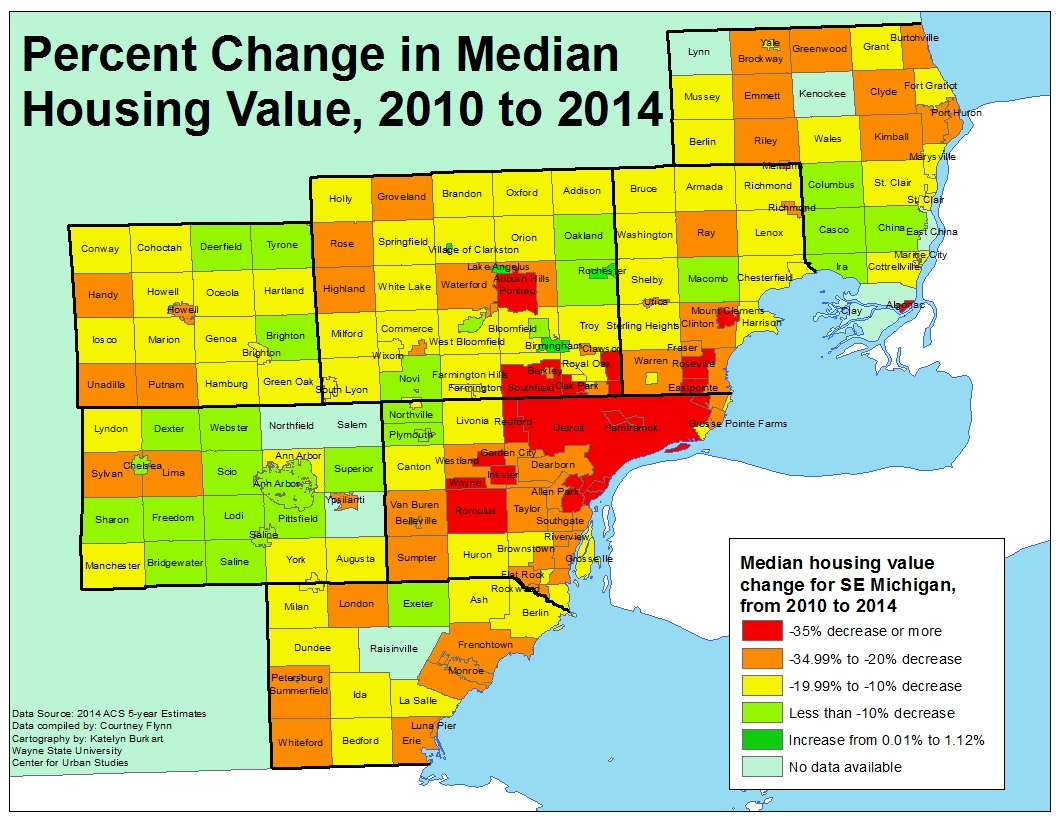According to American Community Survey (ACS) data, median housing values throughout Southeastern Michigan declined between 2010 and 2014. These results are based on residents’ estimates of the value of their homes. They also contrast with more recent reports based on the Case-Schiller Index of actual sales.
The city of Algonac in St. Clair County had the largest median housing value decrease during that time period at 48 percent; the reported 2014 value was $102,500 and the reported 2010 value was $195,800. Hamtramck and Redford Township came in second for the median value decreases throughout the region at 44 percent. For Hamtramck, the ACS reported the median housing value was $39,800 in 2014 and in 2010 the median value was reported at $73,700. In Redford Township the median housing value was reported at $63,900 in 2014 and $118,500 in 2010. Both of these communities are located in Wayne County, which had the largest overall median housing value decline of the seven counties in the region at 28 percent. On the other hand, Washtenaw County had the lowest percent decline in median housing value between 2010 and 2014 at 10 percent. In Washtenaw County there were nine communities with a median housing value decrease of 5 percent or less. In addition, the city of Dexter experienced a 3 percent median housing value increase, from $216,600 to $222,6000. In Oakland County, cities that experienced a housing value increase between 2010 and 2014 were Birmingham (1%) and Rochester (1%). Lake Angelus in Oakland County did not experience an increase or decrease; median housing values for this community remained at above $1 million for both years.
Of all the communities in Southeastern Michigan, Lake Angelus also had the highest reported median housing value in 2014 at above $1 million (the Census does not specify above $1 million). River Rouge on the other hand had the lowest reported median housing value $36, 800.
In recent Drawing Detroit posts, and throughout the media, increases in median housing values have been reported in 2015 and 2016. The data displayed in this post shows a contrary picture for 2010 through 2014. This, in part, may be based on perception as the housing values used in the ACS are based on respondents’ estimates of how much their property would sell for at that time. As we continue to explore housing questions in upcoming posts another question to now be addressed will be why there are different reports on the state of housing values and why, and if, there is in fact a perception that homes are worth less than in 2010 when the rebound from the economic crisis was moving at a much slower pace.
